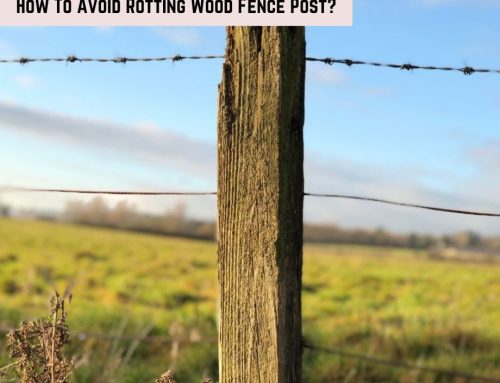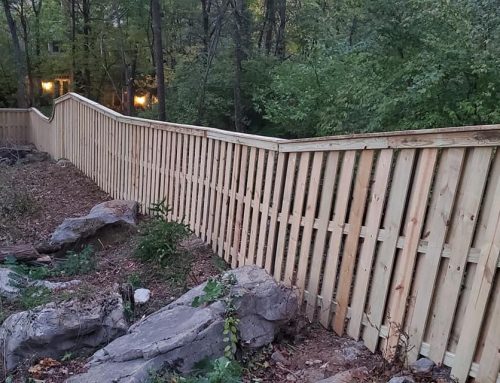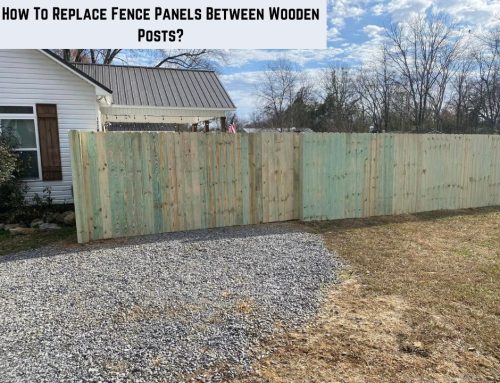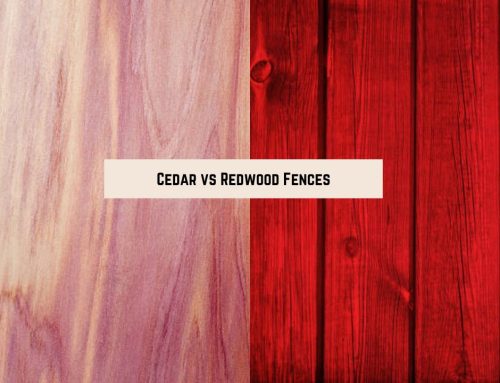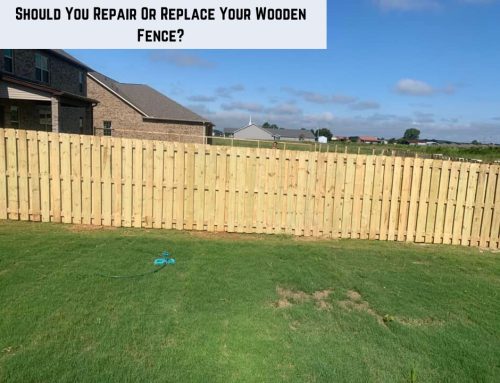Wondering if it’s possible to connect wood fence panels to metal posts? The answer is Yes, you can attach wood fence panels to metal posts. This combination offers durability and aesthetics, creating a fence that combines the best of both materials.
In this concise guide, I’ll address this common question and provide you with all the essential information you need to make it happen. Don’t miss out on learning this valuable skill that can enhance the durability and aesthetics of your fence. Let’s dive in!
Wood-Metal Fence Combinations – Pros and Cons
| Pros | Cons |
|---|---|
| Enhancing Durability | Maintenance Challenges (Rotting wood, rusting metal) |
| Aesthetic Appeal | Cost Considerations (Higher initial investment) |
| Versatility in Design | Aesthetic Mismatch (Potential clash in visual appeal) |
| Cost-Effective Solution | Security and Privacy (Balanced security & privacy, not extreme in either aspect) |
| Easy Maintenance | — |
Advantages of Wood-Metal Fence Combinations – Details
In this section, I’ll explore the pros of wood-metal fence combinations in detail to help you make an informed decision.
Enhancing Durability
Metal posts excel in durability, resisting rot, insects, and weather damage. They can last for decades with minimal maintenance, ensuring your fence remains secure.
Aesthetic Appeal
While metal posts prioritise durability over looks, wood fence panels bring warmth and natural beauty to your fence. The combination adds an elegant contrast between the sturdy metal posts and the attractive wood panels.
Versatility in Design
Combining wood panels with metal posts offers design versatility. Choose from various wood types and finishes to match your desired aesthetic. Customise the fence’s height, spacing, and style to fit your specific needs and preferences.
Cost-Effective Solution
Wood panels can be pricier than metal, but metal posts are usually more affordable than wooden ones. This cost-effective pairing provides durability and aesthetics without a hefty price tag.
Easy Maintenance
Metal posts reduce maintenance efforts, focusing primarily on wood components. Regular inspections and wood maintenance can keep your fence in excellent condition without the intensive care a full wooden fence demands.
Disadvantages of Wood-Metal Fence Combinations – Details
Here are some disadvantages of Wood-Metal Fence Combinations.
Maintenance Challenges
Combining wood and metal in a fence can lead to maintenance challenges. Wood panels are susceptible to rot, warping, and termite damage over time, while metal posts may rust. This dual material composition requires regular inspections and upkeep, making it less convenient for those seeking a low-maintenance solution.
Cost Considerations
Another drawback of wood-metal fence combinations is the cost. These fences often require a higher initial investment due to the expense of quality wood and metal materials. While they can offer durability, the upfront cost may deter budget-conscious homeowners.
Aesthetic Mismatch
Wood and metal may not always complement each other visually. Achieving a cohesive and aesthetically pleasing design can be challenging, as the natural warmth of wood may clash with the industrial look of metal. Finding the right balance between the two materials can be tricky and may not suit every property’s style.
Security and Privacy
The robustness of metal posts enhances fence security, while wooden panels provide privacy. This combination strikes a balance between safety and seclusion, which is crucial for many homeowners.
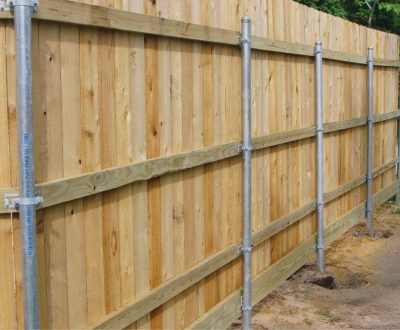
How to Attach Wood Fence Panels to Metal Posts
To attach wood fence panels to metal posts, gather the following materials:
- Wood fence panels
- Metal posts
- Screws
- Drill with a screwdriver bit
- Measuring tape
- Level
- Pencil
- Brackets (optional)
Step-by-Step Guide to Attaching Wood Panels to Metal Posts
| Step | Action | Key Notes |
|---|---|---|
| 1 | Measure & mark height on metal posts | Use a tape measure + level for accuracy |
| 2 | Attach brackets (optional) | Adds stronger support for panels |
| 3 | Align wood fence panels with posts | Keep panels level; use a helper |
| 4 | Screw panels into metal posts | Secure top, middle, and bottom |
| 5 | Check alignment continuously | Adjust as needed to keep straight |
| 6 | Repeat the process for all panels | Maintain consistent spacing |
| 7 | Trim panels if needed | Cut excess for a perfect fit |
Step 1: Measure and Mark
Begin by measuring the desired height for your wood fence panels on the metal posts. Use a measuring tape and mark the height with a pencil. Ensure the posts are level by using a level tool.
Step 2: Attach Brackets (Optional)
If you prefer a more secure attachment, you can use brackets. Attach brackets to the metal posts at the marked height. Make sure they are level and properly aligned with the posts.
Step 3: Align Wood Panels
Position your wood fence panels against the metal posts, ensuring they are level and aligned with the brackets if used. Have someone assist you in holding the panels in place.
Step 4: Attach Panels
Using a drill with a screwdriver bit, drive screws through the wood panels into the metal posts. Place screws at the top, middle, and bottom of each panel to secure them firmly. Ensure the panels are level as you attach them.
Step 5: Check Alignment
Double-check the alignment and levelness of your wood fence panels as you work your way along the posts. Make any necessary adjustments to ensure the panels are straight and secure.
Step 6: Repeat the Process
Continue attaching the wood fence panels to the metal posts along the entire length of the fence. Repeat the steps for each panel, ensuring consistent spacing and alignment.
Step 7: Trim if Needed
If your wood panels are too long for the space between the metal posts, you may need to trim them to fit. Measure and mark the excess, then cut the panels using a saw.
By following these simple steps, you can easily attach wood fence panels to metal posts, creating a secure and attractive fencing solution for your property.
Final Thoughts
Combining wood fence panels with metal posts offers a winning blend of durability and aesthetics. While maintenance and cost considerations are factors to ponder, this versatile pairing allows you to strike a balance between security, privacy, and visual appeal.
With the right materials and simple steps, attaching wood panels to metal posts becomes a straightforward DIY project that can enhance the overall functionality and appearance of your fence. Explore this option to enjoy the best of both worlds in your fencing solution.
FAQ
How to attach wood fence to metal post?
Use metal brackets, U-clips, or screws designed for metal. Ensure posts are level and secure, then attach wood panels firmly for stability.
How to build a wood fence using metal posts?
Set metal posts in concrete, attach horizontal rails with brackets, then fasten wood panels. Metal posts provide durability while wood panels offer aesthetic appeal.
Are metal fence posts better than wood?
Metal posts are more durable, rot-resistant, and low-maintenance than wood. They last longer, handle heavy fences, and withstand harsh weather without warping.
Are metal or wood fence posts better?
Metal posts are stronger and longer-lasting, while wood posts offer natural appearance. Choice depends on budget, aesthetics, and desired maintenance requirements.
Can you use metal posts for all types of wood fences?
Yes, metal posts work with most wood fence styles, including privacy, picket, and ranch fences, providing strength and longevity while supporting wood panels securely.

